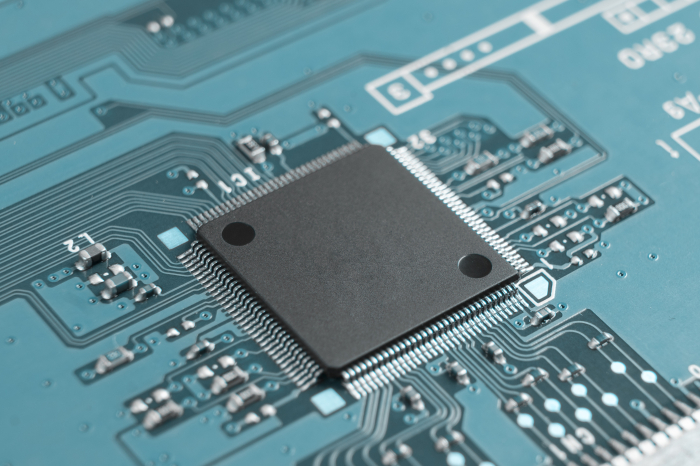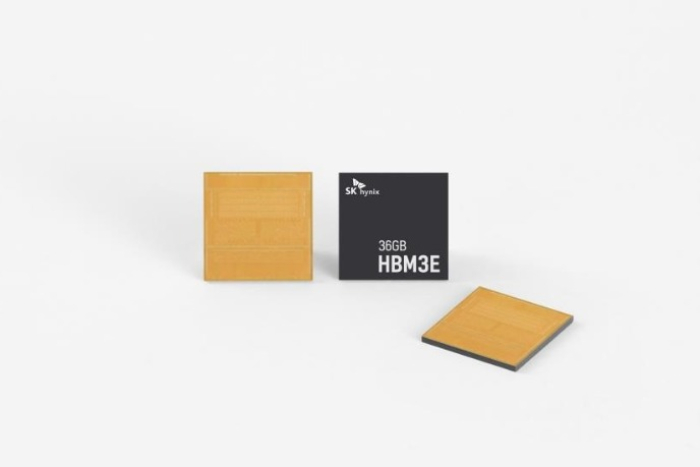Korean chipmakers
Chip winter looming? Micron, Samsung give opposite views
Jeong-Soo Hwang and Eui-Myung Park
Sep 26, 2024 (Gmt+09:00)

Micron Technology Inc. on Wednesday delivered stronger-than-expected quarterly results and gave a bullish outlook for the current quarter, shrugging off Morgan Stanley’s downbeat report that forecasts oversupply and price falls for semiconductor chips.
The US chipmaker posted 93% revenue growth on-year in the June-August quarter, driven by soaring demand for the data center DRAM and high-bandwidth memory (HBM) crucial for AI applications.
Revenue for both data center memory and NAND chips came in at record highs in its fiscal fourth quarter ending in August.
“We are entering fiscal 2025 with the best competitive positioning in Micron's history. We forecast record revenue in fiscal Q1 and a substantial revenue record with significantly improved profitability in fiscal 2025,” said Micron President and CEO Sanjay Mehrotra in its earnings statement on Wednesday.
He added that the company has already sold all the HBM it plans to make in both 2024 and 2025.
“Demand from data center customers continues to be strong and customer inventory levels are healthy,” Reuters quoted Mehrotra as saying during a conference call with analysts after the earnings release.
Its revenue from computing and network divisions in charge of AI chips skyrocketed 152% on-year and rose 17% on-quarter in its fiscal fourth quarter.

Micron is one of the world’s three providers of HBM chips, along with SK Hynix and Samsung Electronics Co. HBM is a high-performance, high-capacity memory designed to quickly process vast amounts of data.
Micron expects to report record revenue of about $8.7 billion, plus or minus $200 million, in the first quarter and forecasts a gross margin leap to about 39.5% for the same period.
Its earnings guidance slightly beat analyst expectations, according to Reuters, and contrasted Morgan Stanley’s views on the semiconductor industry.
On Sept. 13, the US brokerage house said the DRAM and HBM markets would enter a downturn next year due to softening demand and oversupply. It forecast that HBM supply would more than double in 2025, downgrading SK Hynix to “underweight” from a “top pick."
SAMSUNG FORESEES BALANCED SUPPLY AND DEMAND
Samsung Electronics Co., the world’s No. 1 memory chipmaker, also painted a bright outlook for the HBM market, anticipating HBM demand and supply to be balanced at 25.0 gigabytes in 2025.
Samsung expects HBM to make up 28% of DRAM sales by 2025 from the estimated 16% in 2024 in terms of wafer input. It predicts the customized AI memory market to expand to 229.4 GB by 2028 from 12.9 GB in 2023.
“As the semiconductor market is transitioning into a customized market where server DRAM and HBM account for half of DRAM demand, the era is coming where manufacturers are gaining the upper hand in pricing negotiations,” said Kim Sun-woo, a Meritz Securities analyst.
TOO MUCH FACILITY INVESTMENT?
Semiconductor industry observers said concerns about heavy facility investments are overdone. Capital expenditures are focused on increasing the production of high-value chips such as HBM and converting outdated production lines to sophisticated ones. Thus, their facility investments will unlikely result in a supply glut, they noted.
Google, Microsoft and other Big Tech firms are investing heavily in AI servers. Nvidia is slated to mass-produce next-generation AI processors around the end of this year, which are expected to generate $10 billion in revenue in the fourth quarter of this year.
Its forthcoming AI processors will be equipped with eight HBM chips each. AI servers will fit with AI processors and solid-state drives.
Bain and Company, a global consultancy, echoed the optimistic view on the semiconductor market, warning of AI chip shortages in a report published on Wednesday.
It forecasts demand for HBM and NAND to increase 60-65% and 30-35% by 2026, respectively, compared with 2023.
Write to Jeong-Soo Hwang and Eui-Myung Park at hjs@hankyung.com
Yeonhee Kim edited this article.
More To Read
-
SK Hynix mass-produces 12-layer HBM3E for Q4 shipment
Sep 26, 2024 (Gmt+09:00)
-
Analysts rebut Morgan Stanley’s chip winter view; oversupply unlikely
Sep 22, 2024 (Gmt+09:00)
-
SK Hynix shares nosedive after Morgan Stanley downgrade
Sep 19, 2024 (Gmt+09:00)
-
Samsung, SK Hynix up the ante on HBM to enjoy AI memory boom
Sep 04, 2024 (Gmt+09:00)
-
SK Hynix to supply 12-layer HBM3E to Nvidia in Q4; profit soars in Q2
Jul 25, 2024 (Gmt+09:00)
-
Samsung tipped to supply HBM3 to Nvidia for Chinese market
Jul 24, 2024 (Gmt+09:00)
-
Samsung to mass-produce HBM4 on 4 nm foundry process
Jul 15, 2024 (Gmt+09:00)
-
Samsung launches dedicated HBM, advanced chip packaging teams
Jul 05, 2024 (Gmt+09:00)
-
Samsung to launch 3D HBM chip packaging service in 2024
Jun 16, 2024 (Gmt+09:00)
-
SK Hynix works on next-generation HBM chip supply plans for 2025
May 30, 2024 (Gmt+09:00)
-
SK Hynix’s HBM chip orders fully booked; 12-layer HBM3E in Q3: CEO
May 02, 2024 (Gmt+09:00)
-
SK Hynix to invest $14.6 bn to build HBM plant in S.Korea
Apr 24, 2024 (Gmt+09:00)